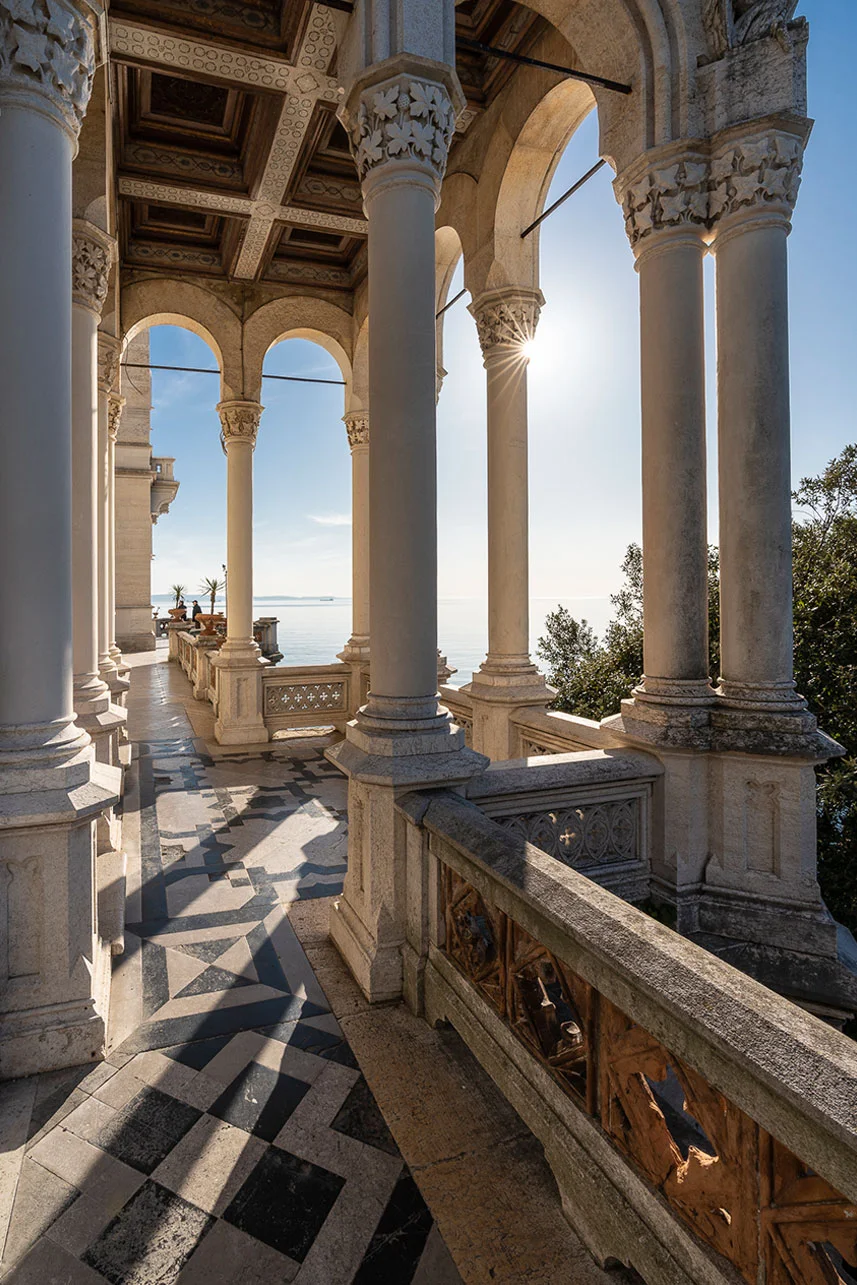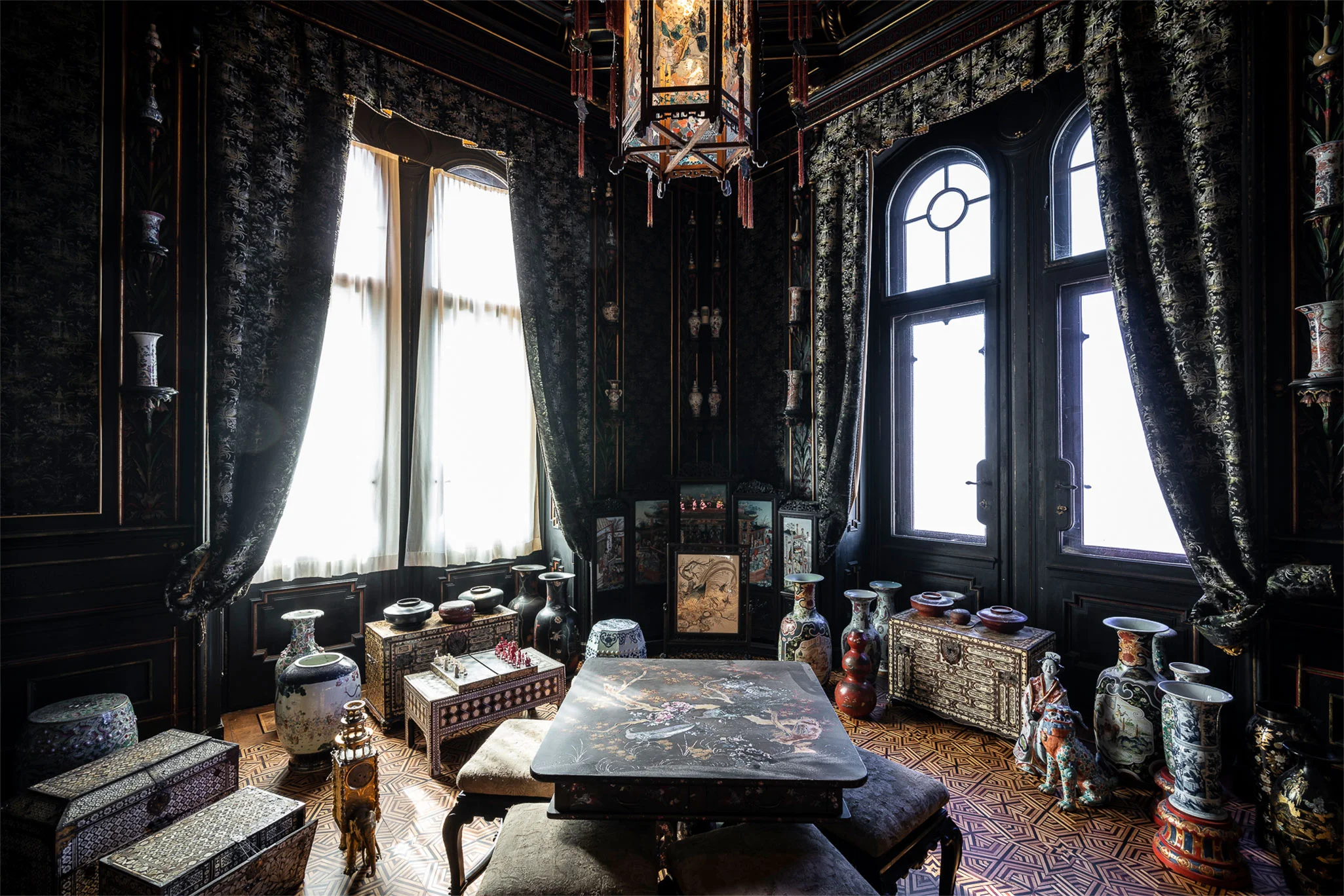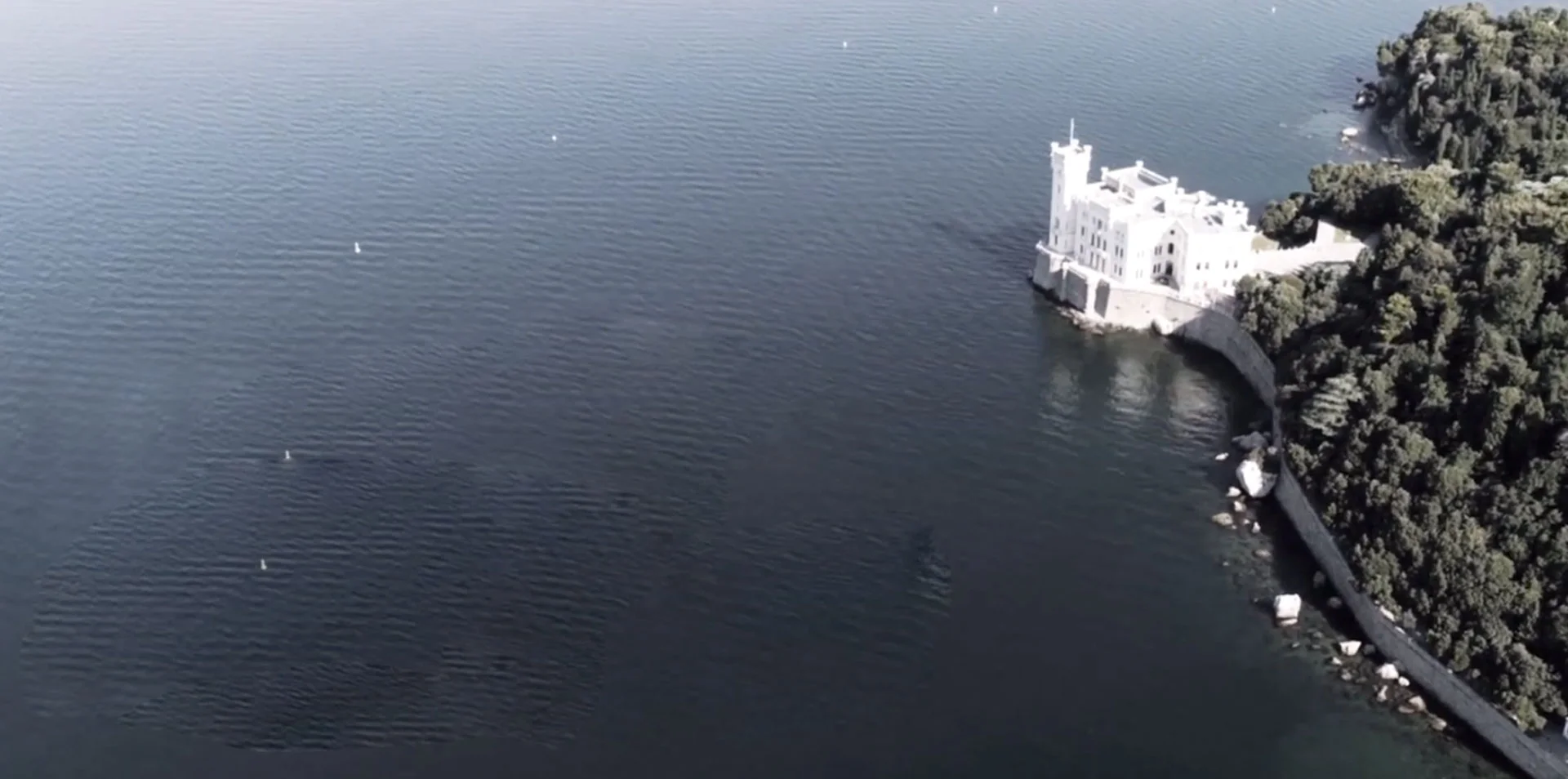Location: Room IV – Maximilian’s study (the ‘Novara Room’)

This seventeenth-century cabinet, called a contador in Portuguese, was probably made in the colony of Goa in India. It is characteristic of Indo-Chinese-Portuguese production methods, a nineteenth-century term that refers to objects made in the Portuguese colonies of China and Goa from the sixteenth to eighteenth centuries. Furniture that falls into this category generally has European forms and shapes, while oriental influences can be seen in the decorative elements and the use of exotic wood.
The surface of the cabinet is covered in dense phytomorphic arabesques in ebony and ivory. Four female figures with marked features make up the four legs. They all wear jewellery and a skirt, from which a snake or fish tail emerges, wrapping around the back. In India, these female creatures were called nagi, nagin or nagini, spirits linked to water, hybrid beings with the body of a woman and the tail of a snake or fish.
It is said that the cabinet was purchased by Archduke Ferdinand Maximilian at an antiques market during his stay in Lisbon in June 1852, or that it was a gift from the Portuguese royal court. In his diary from his journey to Portugal, Maximilian mentions a visit to an antiques dealer in the capital city, where he bought various pieces of furniture. However, he does not refer to this cabinet in particular, meaning it could have been purchased in Trieste or Venice.





Recent Comments